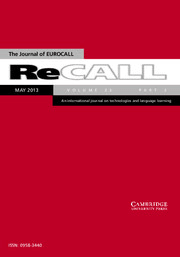
ReCALL
Scope & Guideline
Exploring the Future of Language Learning through Technology
Introduction
Aims and Scopes
- Computer-Assisted Language Learning (CALL):
The journal consistently emphasizes research on CALL, exploring various tools and technologies that facilitate language learning, including software, applications, and online platforms. - Innovative Pedagogical Approaches:
ReCALL publishes studies that investigate new teaching methodologies, such as task-based learning, game-enhanced learning, and immersive technologies, demonstrating their impact on language acquisition. - Teacher Education and Professional Development:
The journal highlights research on preparing language teachers for the integration of technology in their teaching practices, focusing on professional development and pedagogical knowledge. - Learner-Centered Research:
Research that considers learner experiences, preferences, and outcomes in language learning contexts is a core focus, emphasizing the importance of learner engagement and agency. - Data-Driven Learning and Assessment:
The journal includes studies on data-driven learning approaches and assessments, examining how analytics and learner data can inform teaching and improve language learning outcomes.
Trending and Emerging
- Artificial Intelligence in Language Learning:
There is a growing focus on the use of AI tools, such as chatbots and automated feedback systems, to enhance language learning experiences, indicating a trend towards personalized and adaptive learning environments. - Virtual and Augmented Reality Applications:
Research exploring the use of virtual and augmented reality technologies in language education is on the rise, highlighting their potential for immersive learning experiences that reduce anxiety and enhance engagement. - Data-Driven Decision Making:
An increasing number of studies utilize learning analytics and big data to inform teaching practices and improve learner outcomes, reflecting a trend towards evidence-based approaches in language education. - Collaborative and Interactive Learning Environments:
There is a notable increase in research on collaborative learning through technology, including virtual exchanges and online communities, emphasizing social interaction as a key component of language acquisition. - Multimodal Learning Approaches:
The integration of various modes of communication, including video, audio, and interactive elements, is becoming more prevalent, indicating a shift towards multimodal strategies that cater to diverse learner needs.
Declining or Waning
- Traditional Language Learning Methods:
There is a noticeable decline in research focused on conventional language teaching methods that do not incorporate technology. As digital tools become more prevalent, traditional approaches are being overshadowed. - Static Text-Based Learning:
Research centered solely on static, text-based learning materials is less prominent, as studies increasingly favor interactive and multimedia approaches that engage learners more effectively. - Narrow Focus on Specific Language Skills:
Papers that exclusively target isolated language skills (e.g., grammar drills) are less common, with a shift towards integrated skill development and holistic approaches in language learning. - Limited Contextual Research:
There is a decrease in studies that examine language learning in highly specific or localized contexts without broader applicability, as researchers seek to address more universal themes and trends. - Replicative Studies with Minimal Innovation:
While replication remains valuable, there is a waning interest in studies that replicate existing research without introducing novel insights or variations, as the field moves towards innovation and new methodologies.
Similar Journals
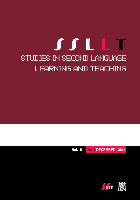
Studies in Second Language Learning and Teaching
Transforming language education with interdisciplinary approaches.Studies in Second Language Learning and Teaching is a premier open-access journal dedicated to advancing research and scholarship in the fields of education, linguistics, and language acquisition. Published by ADAM MICKIEWICZ UNIVERSITY, KALISZ, this journal has consistently achieved high acclaim, reflected in its impressive Q1 rankings in both Education and Linguistics and Language categories for 2023. With a robust focus on innovative methods, effective pedagogical strategies, and interdisciplinary approaches, Studies in Second Language Learning and Teaching aims to facilitate dialogue among researchers, educators, and practitioners, fostering a deeper understanding of language learning and teaching in diverse contexts. Since its transition to open access in 2011, the journal has expanded its reach, providing valuable resources and research findings to a global audience. With an exceptional Scopus ranking placing it in the top percentiles across multiple categories, this journal stands as a crucial platform for the dissemination of ground-breaking research in second language education.

Journal of Language Teaching and Learning
Transforming Language Learning with Cutting-Edge InsightsJournal of Language Teaching and Learning, with ISSN 2146-1732, is a pivotal peer-reviewed publication dedicated to advancing the fields of language education and linguistics. Published by JOURNAL LANGUAGE TEACHING & LEARNING in Ankara, Turkiye, this journal aims to disseminate cutting-edge research, innovative teaching strategies, and critical analyses that serve the diverse needs of language teachers and learners globally. As an open-access journal, it is committed to providing unrestricted access to high-quality research, making it an invaluable resource for researchers, educators, and students alike. With a strong focus on promoting effective language acquisition and pedagogical practices, the Journal of Language Teaching and Learning holds an important space in the academic landscape, encouraging scholarly dialogue and collaboration in the pursuit of linguistic excellence.
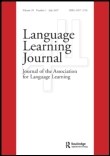
Language Learning Journal
Fostering global dialogue in language learning advancements.Welcome to the Language Learning Journal, a premier resource for researchers, educators, and linguists alike, published by Routledge Journals, Taylor & Francis Ltd. With a proud history dating back to 1990 and commitment to advancing the exploration of language acquisition, this esteemed journal boasts an impressive impact factor within Q1 rankings across both the Education and Linguistics and Language categories. Ranked #40 in Language and Linguistics and achieving a 96th percentile in the Arts and Humanities, the journal serves as a crucial platform for disseminating cutting-edge research, innovative methodologies, and impactful discussions in the field of language learning. Although currently not offered as an open access publication, the depth and quality of content ensure significant contributions to the body of knowledge for professionals and scholars. With its global reach, the Language Learning Journal is dedicated to fostering the development and understanding of language learning processes, enabling readers to stay informed about the latest trends and findings through rigorous peer-reviewed articles.

GIST-Education and Learning Research Journal
Fostering Global Collaboration in Education ResearchGIST-Education and Learning Research Journal, published by INST UNIV COLOMBO AMERICANA-UNICA, stands as a prominent vessel for the dissemination of scholarly research in the field of education and learning. Since its inception in 2007, this open access journal has championed the free exchange of knowledge, allowing researchers, educators, and students from around the globe to contribute to and benefit from the latest findings and practices in educational theory and methodology. With its commitment to enhancing educational practices and influencing policy through rigorous research, GIST-Education and Learning Research Journal invites submissions that explore innovative teaching strategies, learning technologies, educational psychology, and related fields. Its accessibility and dedication to quality research make it an invaluable resource for anyone invested in the improvement of educational outcomes.
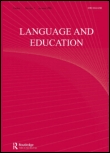
Language and Education
Fostering Excellence in Language Studies and TeachingLanguage and Education is a leading academic journal published by Routledge Journals, Taylor & Francis Ltd, specializing in the intersection of language studies and educational practices. With an impressive Q1 ranking in both Education and Linguistics and Language categories for 2023, it stands out as a crucial resource for researchers, educators, and industry professionals. Covering a wide array of topics pertinent to language acquisition, pedagogical methodologies, and culturally responsive education, this journal supports rigorous scholarship in the field. While not currently offering open access options, its contributions are vital for advancing knowledge and fostering innovation across disciplines. The journal's long-term commitment to excellence is evidenced by its high rankings in Scopus, placing it in the 94th percentile in Language and Linguistics and the 80th percentile in Education. Since its inception in 1987, Language and Education has not only tracked the evolving landscape of language education but has also actively shaped it, making it an indispensable tool for anyone invested in educational research and practice.
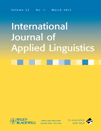
International Journal of Applied Linguistics
Connecting Theory and Practice in Applied LinguisticsInternational Journal of Applied Linguistics, published by WILEY, is a premier platform for cutting-edge research in the field of applied linguistics. With a notable Impact Factor and ranked in the top Q1 quartile of linguistics and language, this journal serves as an essential resource for scholars, practitioners, and students. The journal’s wide-ranging scope includes various subfields such as language acquisition, language education, sociolinguistics, and discourse analysis, fostering multidisciplinary approaches to language studies. It has achieved a significant Scopus Rank, placing it in the 90th percentile for both Arts and Humanities as well as Social Sciences categories, reflecting its high visibility and influence in the academic community. The International Journal of Applied Linguistics is committed to advancing the understanding of language use in real-world contexts through rigorously peer-reviewed articles that contribute to both theory and practical applications. While it is not an open-access journal, it remains a highly respected publication for researchers looking to disseminate and acquire knowledge in applied linguistics.

CALICO Journal
Advancing the Future of Language Education through Technology.CALICO Journal, published by EQUINOX PUBLISHING LTD, stands at the forefront of research in the intersection of technology and language education. With a prestigious history that spans from 1983 to 2024, this journal has been pivotal in advancing the field, earning high rankings in multiple categories, including Q1 in Education and Linguistics and Language, as well as Q2 in Computer Science Applications. Researchers and educators alike benefit from its wealth of articles that delve into innovative pedagogical strategies, the application of technology in language learning, and the exploration of linguistic theories. Although the journal is not currently open access, its impactful contributions are widely recognized, as evidenced by its strong Scopus rankings, placing it in the 88th percentile for Language and Linguistics. CALICO Journal remains an essential resource for those looking to enhance their practice and expand their knowledge in the dynamic fields of language learning and technology integration.
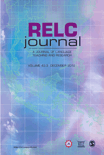
RELC Journal
Challenging Perspectives, Inspiring Change in Language EducationRELC Journal, published by SAGE Publications Ltd, stands as a leading platform in the fields of Education and Linguistics, boasting an impressive Q1 ranking in both categories according to the latest metrics. Established in 1970 and continuing its commitment to academic excellence through 2024, the journal features rigorous peer-reviewed research that explores the intersections of language, culture, and pedagogy. With a notable Scopus ranking that places it in the 98th percentile for both Language and Linguistics (Rank #16/1088) and Education (Rank #91/1543), the RELC Journal is essential for scholars, educators, and practitioners seeking to contribute to and stay abreast of cutting-edge developments in their respective fields. Although currently not open access, the journal remains accessible to a diverse audience and invites contributions that challenge conventional perspectives and inspire innovative practices in language education.
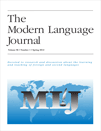
MODERN LANGUAGE JOURNAL
Advancing Knowledge in Modern Language Theory and PracticeThe MODERN LANGUAGE JOURNAL, published by WILEY, stands as a premier academic resource in the field of linguistics and language studies. With its strong legacy dating back to 1916, this journal has evolved to address contemporary issues and trends in language learning, teaching, and research. It holds a prestigious Q1 ranking in both Linguistics and Language categories as of 2023, reflecting its high impact and relevance in scholarly discourse, supported by notable Scopus rankings that place it in the top percentiles of its field. The journal serves as an essential conduit for researchers, educators, and students seeking to contribute to and stay abreast of advancements in language education and linguistic theory. Although it does not currently offer open access options, the journal remains committed to disseminating significant findings that inspire innovative methodologies within the realm of modern languages.

Porta Linguarum
Empowering scholars to navigate the complexities of language.Porta Linguarum, published by UNIV GRANADA in Spain, is a pioneering journal dedicated to the fields of linguistics and language studies, with a dual focus on the educational implications and applications within these disciplines. Launched in 2008 and continuing its impactful contributions into 2024, the journal is recognized for its rigorous peer-reviewed articles that address contemporary language issues, pedagogical approaches, and linguistic research, evidenced by its notable rankings in the 2023 Scopus metrics. Porta Linguarum holds a distinguished Q1 classification in Linguistics and Language, alongside a respectable Q3 placement in Education, marking it as a valuable resource for academics and practitioners alike. With an impressive ranking of 231 out of 1088 in the Arts and Humanities category and a strong 78th percentile ranking for Language and Linguistics, this journal facilitates the exchange of innovative ideas and promotes scholarly discourse. Although currently not adopting an open access model, it remains an essential platform for advancing knowledge in linguistics and education.